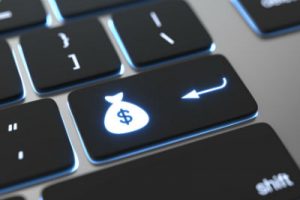By Giorgi Mikhelidze

The United States Dollar (USD) is one of the strongest and most used currencies around the world. As of today, more than 60% of all foreign bank reserves, as well as 40% of the world’s depts, are in USD. While the US boasts the world’s strongest, most equipped, and the best-trained military the United States dollar is still one of the biggest weapons in the arsenal.
Early History
The United States Dollar was first printed in 1914 after the foundation of the Federal Reserve Bank. The currency is considered almost miraculous due to the fact that it only took 60 years for it to become the global currency we know today. This is duly attributed to both world wars where the United States took on itself a huge role not only physically but financially as well. It is no secret that the US was the main supplier of weapons and ammo for the allied forces in world war 2 and the Soviet Union itself. This was not a wholehearted gift though. The nations in need were trading all of the required military equipment into large amounts of gold accumulating the aforementioned financial instrument, which was what currencies depended on at that time, in the United States. However, it is worth noting that this only boosted the US economy to the world leader it is now although in 1913 the country already overtook Britain’s economy, which was largest at that time.
After 1914, when World War 1 broke out, the countries ditched the gold standard and started paying their military expenses in paper money which caused a huge devaluation of the currencies. The war was so taxing that just three years after the war started Great Britain, which was the center of world commerce at that time, found itself in the position where they had to start borrowing money for the first time in history. The United States was an obvious choice for the lender’s position for many countries at that time. This basically destroyed the accounts of world merchants who were trading in British pounds. This was the turning point where the United States dollar replaced British pounds in the world reserves.
The End of World War 2
The end of World War 2 has created a new turmoil in world economies. Bretton Woods Agreement was created between the countries to make sure that the currency exchange would happen at more or less fixed rates between the US and other denominations. This was the first step the world took towards a more open world market allowing for the foreign exchange market to become more accessible for different financial institutions. However, at this point, the main participants of such markets were larger international banks. In 1971 the US president Richard Nixon ended the Bretton Woods Accord thus creating a system where free-floating currency could operate. The new Smithsonian Agreement allowed rates to fluctuate by 2% both up and down. This has slowly resulted in the creation of the foreign exchange market (Forex, FX) as we know it now. Taking a look at the foreign exchange explained here it becomes obvious how the market operates now but what needs to be understood is that it used to be exclusive to huge institutions back in that day and only became available to individual traders couple of decades ago with the development of the IT infrastructure.
Up until this point, where the Bretton Woods Agreement was abolished, the world economies were always relying on the gold standard to peg their currencies and make the exchange much more stable. As we already mentioned this method was considered obsolete after the first World War. Although the 2nd World War was also incremental for the US dollar to become the global standard. Once the countries started trading actual paper money instead of the gold due to the fact that the US dollar was the cash money everyone agreed upon. To keep the money safe though the countries all across the world started buying securities from the US government. Obviously this was due to the fact that that is the safest place to keep the funds.
However, once the demand for treasury securities grew as well as the US started funneling the deficit money to fuel the economy for the Vietnam War and the Great Society domestic programs the market became overflooded with the paper money. Countries grew concerned for the safety of the currency and thus started exchanging the US dollar back into gold. This demand has outgrown the expectations which led the US president Richard Nixon to make some kind of changes and thus create the Smithsonian Agreement. This has kept the US dollar as a major currency all across the world even in the face of stagflation, aka periods of high inflation, and high unemployment.
Today
The United States has always been weaponizing its strong economy and relying on the US dollar to lead the campaigns against its adversaries without getting American boots on the ground. The actual wars are much more costly not only financially but socially as well while economic sanctions are dealing with huge blows and crippling the countries, individuals, and private companies affected.
The real power of the US dollar is visible when we look at the sanctions program. The country has numerous legislations such as the International Emergency Economic Powers Act, the Patriot Act, and the Trading with the Enemy Act. All of these allow Washington to lead the offensive. Sanctions can target anything and anyone starting from the people, entities, organizations, regimes, and entire countries. Curbs restrict financial institutions, foreign corporations, and individuals from doing business with the sanctioned party. This means that any type of monetary flow through the American banking system can be utilized as a medium for the US to put pressure on the offender which acts against American assets.
For example, a retail banking company BNP Paribas SA has faced $9 billion in fines and had to suspend operations involving the US dollar for almost a year due to the fact that they violated the sanctions against Cuba, Iran, and Sudan. Others like Standard Chartered PLC, Commerzbank AG, and HSBC Holding PLC have paid similar fines as well.
It goes without saying that the US dollar can and is being highly militarized. This is a huge asset to the United States as a world power as the central position of their currency cannot be tackled so easily by any other country or even union in the world.
The alternative reserve system is something European Union, Russia, and China desire. However, it is almost impossible to put such a system in place due to the sheer fact that the Euro, Yen, and Ruble are not realistic options. Euro’s stability is always under question while the Chinese and Russian economies are lagging behind in transparency and do not assure trust worldwide. This means that the US can easily continue its weaponization of dollars in the future while furthering their trades at the same time. As John Connally has stated to the concerned European finance ministers about the export of American inflation in 1971 the dollar “is our currency, but your problem.”










